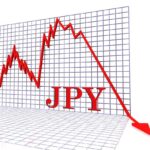Gold Price Teeters Above $3,300 as Trade Optimism Dents Safe-Haven Demand, Fed Bets Provide Some Cushion.
The gold market opened this week with a bearish bias, as optimism surrounding US-China trade relations and a stronger greenback exerted selling pressure on the precious metal. The XAUUSD pair slipped closer to the $3,300 psychological threshold during the Asian session, extending its corrective pullback after failing to capitalize on last week’s modest rebound. However, despite the decline, gold prices remain resilient above a critical support zone near $3,260–$3,265.
The interplay of easing geopolitical tensions, USD dynamics, and dovish Fed expectations has created a tug-of-war in the gold market. Investors continue to weigh the risks of ongoing global conflicts and central bank policy against improving trade sentiment and economic resilience. This has led to cautious positioning ahead of key US economic releases later this week, including Friday’s pivotal Nonfarm Payrolls (NFP) report.
Gold Price Pressured by Risk-On Sentiment and Dollar Strength
A primary drag on gold prices this week has been the reduced appetite for safe-haven assets amid signs of progress in US-China trade talks. On Monday, China announced the exemption of certain US goods from retaliatory tariffs a gesture widely interpreted as a goodwill signal. In response, US Treasury Secretary Scott Bessent noted that the US had received “very good” tariff proposals from several key trading partners, suggesting an overall softening of trade tensions.
This perceived thaw has sparked a modest rebound in risk assets, leading investors to unwind safe-haven trades, including gold. Consequently, inflows have shifted toward the US Dollar and equities, particularly as markets continue to price in economic resilience and corporate earnings strength in the United States.
The USD, which had weakened overnight amid Fed rate cut bets, found renewed traction during the Asian session. This USD rebound added to the downward pressure on gold, making the dollar-denominated commodity more expensive for non-US investors. As a result, the XAUUSD pair remains defensive, lacking clear bullish momentum in the near term.
Fed Rate Cut Expectations Help Limit Gold’s Downside
While trade optimism and USD strength weigh on gold, expectations of Federal Reserve easing continue to offer some support. Traders are currently pricing in a high probability of at least three rate cuts by the end of 2025, with the first move likely to come as early as June.
A dovish Fed outlook typically boosts gold prices, as lower interest rates reduce the opportunity cost of holding non-yielding assets like gold. Moreover, softer rates weaken the US Dollar, further enhancing gold’s relative appeal. The anticipation of easing monetary policy is, therefore, acting as a counterbalance to bearish forces in the market.
However, with inflation proving sticky and US economic data still showing signs of strength, there is an element of uncertainty surrounding the Fed’s path. Investors are now closely watching incoming data to fine-tune their expectations. This includes Tuesday’s JOLTS job openings report, Wednesday’s Personal Consumption Expenditures (PCE) inflation data, and the headline NFP figure due Friday.
Geopolitical Risks Keep the Floor Under Gold Prices
Even as US-China trade tensions appear to ease, geopolitical instability elsewhere in the world continues to lend gold some residual support. Over the weekend, Russian President Vladimir Putin declared a 72-hour unilateral ceasefire in Ukraine, slated to begin on May 8. However, Ukrainian President Volodymyr Zelensky dismissed the offer, calling it a strategic ploy rather than a genuine peace effort.
Additionally, North Korea’s involvement in the Russia-Ukraine conflict through alleged arms supplies to Moscow has heightened concerns over global security alliances and the possible escalation of hostilities.
Such risks keep the geopolitical risk premium intact for gold, maintaining underlying support despite bearish headwinds. For many investors, gold remains a strategic hedge in portfolios, especially amid growing fears of global fragmentation and unconventional warfare.
Market Positioning and Technical Outlook
From a technical perspective, the gold price remains vulnerable to further declines if support near the $3,260–$3,265 region is breached. Below this area, stronger demand may emerge near the $3,240 mark, which coincides with the 50-day moving average and previous consolidation lows.
On the upside, immediate resistance is seen near $3,320, followed by last week’s highs around $3,355. A break above this zone could attract new buyers and reignite bullish momentum toward the $3,400 psychological mark.
That said, the Relative Strength Index (RSI) on the daily chart has yet to enter oversold territory, suggesting room for further downside in the near term. However, momentum may remain muted until the release of key US macro data later this week.
Investor Sentiment and Near-Term Outlook
Investor sentiment remains divided as traders grapple with conflicting signals. On one hand, the prospect of easing trade tensions and resilient US growth reduces the appeal of defensive assets. On the other hand, a dovish Fed outlook and persistent geopolitical uncertainty offer strong reasons to maintain exposure to gold.
The near-term outlook for XAUUSD will likely be shaped by the upcoming macroeconomic data, particularly the NFP report. A stronger-than-expected jobs print could boost the USD and pressure gold lower, while a soft reading may reignite rate cut expectations and support a rebound in gold prices.
Until then, traders may prefer to stay on the sidelines or adopt a range-bound strategy, awaiting clearer directional cues.
Conclusion
Gold prices are caught in a tight balancing act between diminishing safe-haven demand and the enduring appeal of the metal as a hedge against monetary and geopolitical instability. With the USD regaining strength and risk sentiment improving, XAUUSD faces downside pressure. However, dovish Fed bets and global tensions are preventing a deeper sell-off for now.
As markets turn their attention to a heavy slate of US data, volatility is likely to pick up. Gold traders would be wise to monitor not only headline figures but also broader market sentiment and the evolving geopolitical landscape.









